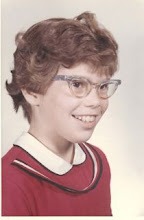skip to main |
skip to sidebar
From the Office of the Future of Reading
Please join me in welcoming today's guest blogger, Jan Hamilton. Jan teaches eighth grade language arts in the Middle Years Programme of an International Baccalaureate School in Hot Springs, a small city in Central Arkansas. Jan came to teaching after raising three children, entered the profession as a reading teacher, and earned National Board Certification five years ago in English/Language Arts. Her passion is connecting young adults with the literature they need to make a reading connection that will lead to a lifetime of reading and wonder. Her students are the best – smart, funny, and inquisitive. Jan's district is committed to preparing my students for the world in which they will work and has invested in their futures with the purchase of 1:1 technology K-8. She loves her students, her work, the people with whom she teaches, technology, and books.
Today in a classroom of eighteen students, one girl reads on her phone, two use tablets, and a handful of others have ChromeBooks open to e-books. Where did this come from and when did it arrive? How did we move from the expansive classroom library to the limitless electronic library? How did I get here as their teacher? I’m 59 years old, for heaven’s sake. But you know what? We came here together, my students and I. And the journey began twelve years ago.
In the beginning we had not even a classroom library. We couldn’t have reading workshop without books, so we built, gathered, and shopped until bookshelves were filled. The most amazing thing happened when thirteen and fourteen year olds were connected to young adult fiction – they read! Student choice became the norm in our room, and later in our school. We were reading. Joy!
Soon I realized that was not enough. My students needed to do something with their reading – talk about it, write about it, share it. Coinciding with my Eureka! moment was the arrival of a computer lab in our hallway. I signed up for a PowerPoint workshop, dissected a book project that I had dubbed a Book Hang-Up, and merged the two into a Digital Book Report. I was officially a techie and my students were hooked on the computer. We moved quickly to Glogs on www.glogster.com . I explored, made what we now call an exemplar, and the students started to Glog. We gathered images for characters and setting, uploaded music and inserted links to associated web sites, and the students shared their books on Glogster. Some students were so excited that they arrived at school the next day with two finished Glogs.
Then we began blogging about books. We have built several blogs over the years, but our best luck with www.kidblog.org. Students shared their book recommendations and their excitement about what they were reading, asked each other questions, and teased each other with juicy tidbits of books. And we have evolved. Our 8th graders now are 1:1 with ChromeBooks, our 7th graders with I-Pads. When we built a class website using Weebly at www.education.weebly.com , the students quickly added a book review page and a blog. We moved from PowerPoint to Photo Story to WeVideo.
Our progress continues. Using trial and error, we have learned from our mistakes. Our best work comes from failure and the willingness to try. My students amazed me, and honestly, I kind of amazed myself. The early lessons we learned about connecting students to good books were supplemented by the evidence that kids love technology. Putting the two together brought a reading revolution to our middle school. Students still read traditionally bound books, but now some sort of electronic device is usually nearby. Book talking is online, we upload and download, and we view projects on a Promethean board or in a gallery walk of ChromeBooks. What an exciting time to be a teacher!
Thank you Jan for showing us how sharing books has evolved!






No comments:
Post a Comment